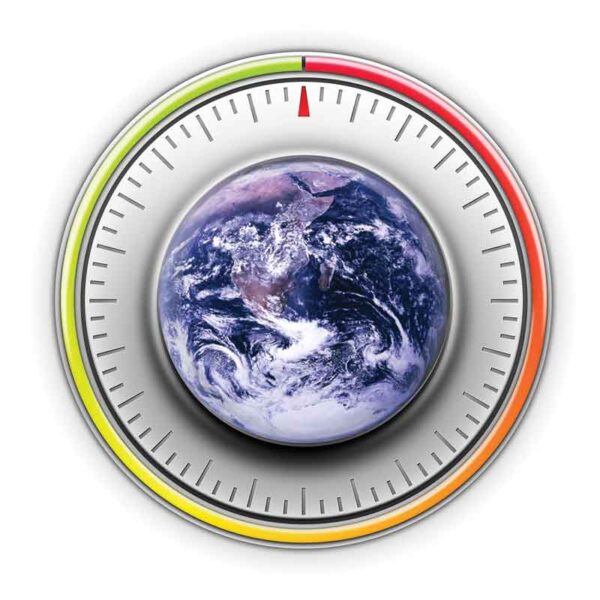Studying the terraforming of other planets can help us survive on Earth.

Our planet is not what it used to be. S&T readers know that the night sky has become muted with widely scattered light. Looking down at Earth from orbit, we’ve seen and measured numerous far-reaching changes, from illumination to land usage to atmospheric composition. Whatever you think about the threat of anthropogenic global warming (AGW), you cannot deny that our species has radically altered our planet. Recently, geologists have been discussing the possibility that we have entered a new geological age — the Anthropocene — defined by humans as agents of global change.
But is this truly unprecedented? After all, our planet, like any other complex system of interacting feedbacks, has a history of unrelenting change. Any planet with robust life will be a dynamic and shifting system. Other species have caused previous planetary transformations, including some that were traumatic for the biosphere. The first photosynthetic microbes 2.4 billion years ago introduced poisonous oxygen gas that had massive “unintended” consequences. Besides causing extinctions, these irresponsible photosynthesizers may have plunged our planet into a frightening “snowball Earth” phase.
We can’t return Earth to “normal” because there never was an ideal and steady climate. Earth history is a sequence of radical changes that, in the absence of intervention, will continue. We might group these, broadly, into four categories, distinguished by the differing roles of life:
1. Natural disasters: life plays no role (asteroid impact).
2. Biologically induced: simple life causes radical changes (oxygen catastrophe).
3. Inadvertent: proto-intelligent life causes accidental changes (ozone destruction, uncontrolled AGW).
4. Purposeful: intelligent life acts to change the environment for its own benefit (repairing the ozone layer, active regulation of climate, the Anthropocene).
Viewed this way, the Anthropocene is something to welcome, to strive for. The natural capriciousness of planetary systems means that long-term survival will require that we learn to enact planetary changes of the fourth kind: purposeful change. To avoid disaster over a billion years as our star and planet evolve, we will need to intervene in planetary climate. What’s new here is foresight — the ability to model future trends, see the consequences of our actions, and contemplate course corrections. We’re only partway there, so in my view we have achieved only proto-intelligence. Viewed large, our current survival challenge is to attain this capability and thus become fully intelligent.
Perhaps we should call our current phase of accidental tinkering the proto-Anthropocene. How do we progress to the point where we are thoughtfully altering our planet’s environment? Sci-fi writers and planetary scientists have studied the problem for a long time — they call it “terraforming” — the alteration of other planets to make them Earthlike by, for example, enhancing the greenhouse on Mars or damping it down on Venus, so that their surfaces can support liquid water and plant life.
This article originally appeared in print in the October 2011 issue of Sky & Telescope.Subscribe to Sky & Telescope.
 0
0
Comments
You must be logged in to post a comment.